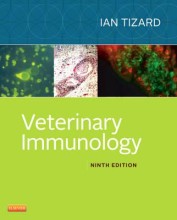What to study for the exam
15 important questions on What to study for the exam
Hindgut/forgut fermenters
- colon: horse, elephant
- caecal: rabbit, guinea pig
- sort of an enlarged stomach -> colon or caecum where fermentation takes place by microbes
- they also do have digestion by their own enzymes
Difference between digestion, absorption and utilization
- absorption is the uptake of nutrients by the epithelial cells of the gut and intestinal walls. Happens passively, actively or via pinocytosis
- utilization is the efficiency with which the absorbed nutriets are used in processes within the animal
Factors that affect the digestibility of a diet
- different species
- amount and composition of enzymes excreted by the pancreas
- composition of the microbial population
- levels of feeding: more feed menas higher passage rate
- digestibility of a diet is closely related to its chemical composition: dietary fibra has the greatest influence
- interactions between dietary compounds
- factors depressing the digestion or utilisation of proteins
- Higher grades + faster learning
- Never study anything twice
- 100% sure, 100% understanding
Factors depressing the digestion of carbohydrates
- it impairs the working of alfa-amylase, the starch digestibility
- more starch will get into the large intestine where it will be degraded by the microbes
- volatide fatty acids will be formed instead of monosacharides
- cramps
Factors affecting absorption of minerals
- contains
phosphorus so it can bind different minerals like Ca, Fe and Mg - Thus is reduces the
availability of these nutrients - this may improve amino acid and energy digestibility in pigs and poultry
- increases the body retention of N, Ca and P
- it binds with divalent cations as Ca and Mg
- reducing their availability
Factors altering the immunesystem
- macromolecular proteins that are capable of inducing a hormonal immune repsonse when ingested by animals
- cause gut wall damage and may also cause chronic hypersensitivy
- chemical and enzymatic treatment
What are the effects of drying forages on the feeding value?
- sundrying takes a while and nutrients may be lost. Also risky with unpredictable weather
- harvesting always happens in a later stage of growth so nutritional value of hay is way lower than young and fresh grass (good for horses)
- moisture content is lower so there will be less bacterial growth and mould
Concentrate feedstuff cereal grains
- rich in cabrohydrates -> good energy source
- low in protein, low in lysine and methionine (= essential AA for monogastric and non-ruminant herbivores)
- low in some minerals and vitamins
- low in fat
- variation among cerals is small
- most of the phosphorus is bound to phytate -> this inhibits protein and mineral absorption
Concentrate feedstuff pulses or legume seeds
- rich in starch/carbohydrates, but lower than cereal grains
- high in protein (higher than cereals) and lysine but low in methionine
- oil content is negligible expect for soybean and peanut
- high in P but low in Ca
- most contain NAFs: protein-inhibitors (soybean) and lectins (which is bad)
Concentrate feedstuffs (oilseeds)
- rich in protein
- rich in oil
- high in P, but low in Ca
Coccidiostats and histomonostats additives
Other factors that predict the value of a feedstuff
- taste, smell and texture determine voluntary feed intake -> has to be attractive for animals. Poultry doesn't have very developed taste and smell buds so they select on texture (grinding in crop)
- cell wall material stimulates intestinal peristalitc (fibres)
- protease inhibitors -> processed by heating
- lectins -> processed by heating
- tannins -> processed by dehulling or breeding/biotechnology
- phytic acid -> use of enzymes
- anitgenic proteins -> chemical and enzymatic treatment
Concepts of protein evaluations in ruminants
- Can be estimated from the ratio between the duodenal flow of microbial marker and the concentration of the marker in isolated bacteria
- or by measuring the amount of organic matter fermented in the rumen
- mobile nylon bag technique
- the composition of absorbed amino acids in ruminants is rather constant because of the microbial protein supply is constant
- To assess which proteins escape from microbial degradation the nylon bag technique is used
Formula to calculate ME on the basis of digestible nutrients in diets or feedstuffs
Why to choose for ME, DE or NE in an energy evaluation system
- DE is not used for poultry because faeces and urine cant be collected seperately. So impossible to measure.
- DE system does not into acount the proportion of different nutrients
- ME is a better measurement for especially protein but still the efficiently of utilisation of digested nutrient for different purposes is ignored
- ME is mostly used for poultry
- NE values are difficult to determine in vivo but are used
- For pigs -> DE, ME and NE systems are used.
The question on the page originate from the summary of the following study material:
- A unique study and practice tool
- Never study anything twice again
- Get the grades you hope for
- 100% sure, 100% understanding





























